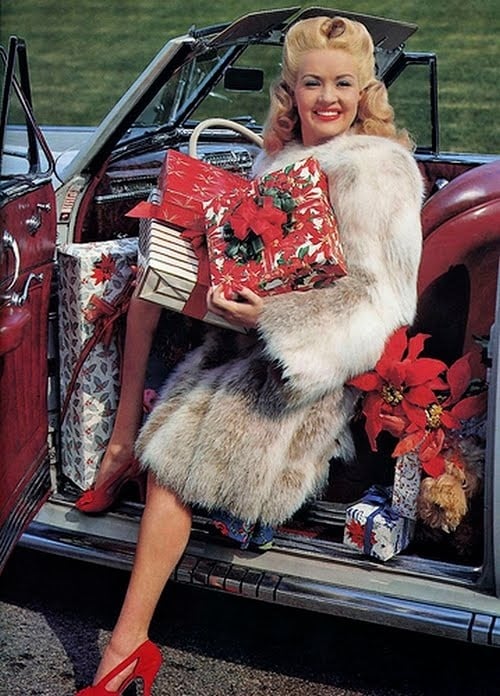IN THIS ISSUE
GAME TIME
By John Mariani
NEW YORK CORNER
5 REASONS YOU DON'T WANT TO DINE OUT
IN NEW YORK DURING THE HOLIDAYS
By John Mariani
ANOTHER VERMEER
CHAPTER 48
By John Mariani
NOTES FROM THE WINE CELLAR
WINES FOR HANUKAH
By Geoffrey Kalish
❖❖❖
 SIAN
RIORDAN on the Oceanliners of the 21st
Century. Go to: WVOX.com.
The episode will also be archived at: almostgolden.
SIAN
RIORDAN on the Oceanliners of the 21st
Century. Go to: WVOX.com.
The episode will also be archived at: almostgolden.
❖❖❖
GAME TIME
By John Mariani
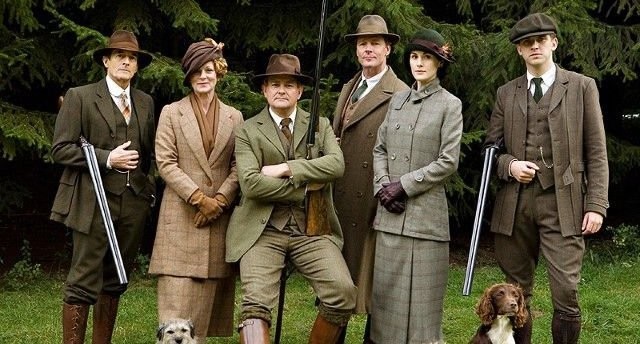
Bird hunting at Downton Abbey
I've been asked often enough what the
greatest meal of my life was, so I've considered
the question and come up with the answer: It was
a plump grouse roasted rare with green cabbage
and a syrupy reduction of red 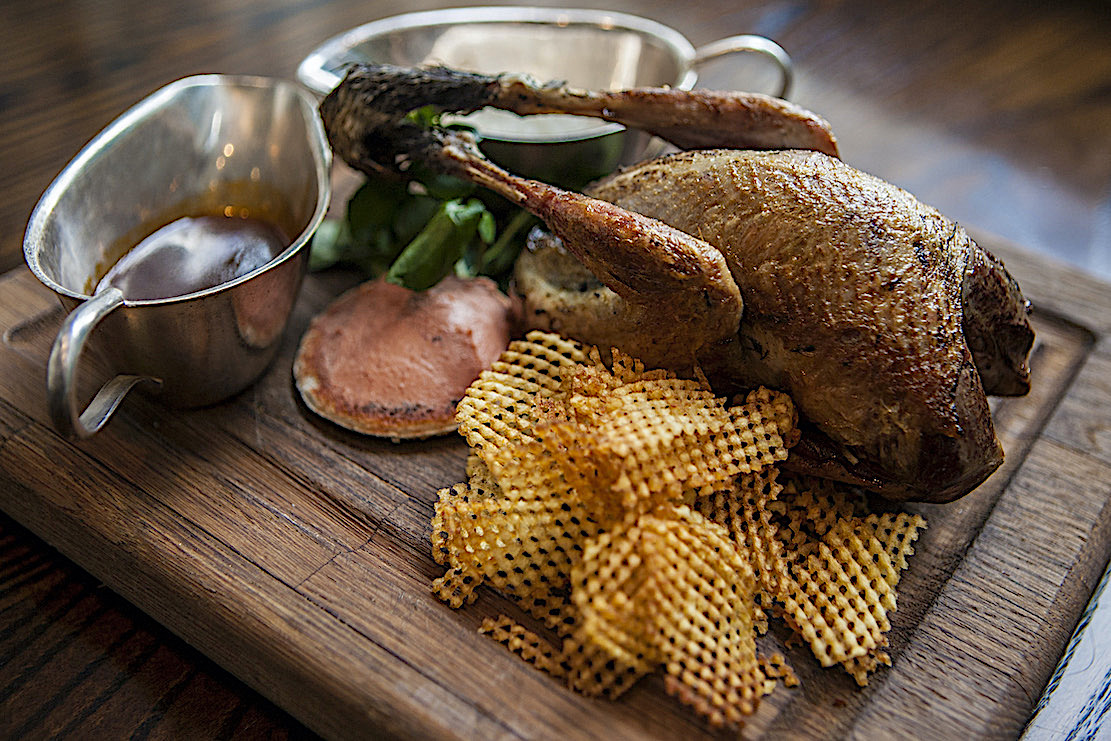 wine,
served to me at a long-gone restaurant in
London. Never having had grouse before, I was
wholly unprepared for the riveting flavor of its
meat, a deep, dark wild taste mingled with the
red wine that just gushed over my tongue. I
remember every bite. Game can do that to the
receptive palate.
wine,
served to me at a long-gone restaurant in
London. Never having had grouse before, I was
wholly unprepared for the riveting flavor of its
meat, a deep, dark wild taste mingled with the
red wine that just gushed over my tongue. I
remember every bite. Game can do that to the
receptive palate.
I don't fully understand why so
many people have no problem chowing down on
Porky Pig and Donald Duck but recoil at the
thought of eating Bambi and Bugs Bunny. I know
it has to do with the perception that some
animals are cuter than others and therefore
deserve to escape the gastronome's table, but it
certainly shouldn't have anything to do with an
ill-advised belief that deer, as well as elk,
antelope, geese, pheasant, grouse, quail and
wild boar, are being shot by hunters despoiling
the wilderness or driving such animals to
extinction.
 The fact is, every
morsel of every game animal in every restaurant
and butcher shop in America comes from a farm
where they are raised, fattened, slaughtered and
inspected specifically for those markets. One
need not get into an argument about the morality
of hunting to accept the notion that game
animals are now treated exactly the way
chickens, steers, lambs, and pigs are for
consumption. The exception to this would be
imported game from Scotland, where a deer or
grouse still may be shot in the wild, but must
be quickly inspected by a health official before
being sold in the marketplace.
The fact is, every
morsel of every game animal in every restaurant
and butcher shop in America comes from a farm
where they are raised, fattened, slaughtered and
inspected specifically for those markets. One
need not get into an argument about the morality
of hunting to accept the notion that game
animals are now treated exactly the way
chickens, steers, lambs, and pigs are for
consumption. The exception to this would be
imported game from Scotland, where a deer or
grouse still may be shot in the wild, but must
be quickly inspected by a health official before
being sold in the marketplace.
This is all to the good, because the
increasing availability of excellent, healthy
game is a boon not only for the gourmet but for
anyone interested in fine meat that is also low
in fat. And,
although wild game generally have a different
flavor (dependent on what they eat) from
farm-raised game, the variety now offered in
restaurants, by butchers and by mail order is
amazingly rich. Chefs adore game for a
chance to play with other flavors and textures
that go better with certain fruits and
vegetables 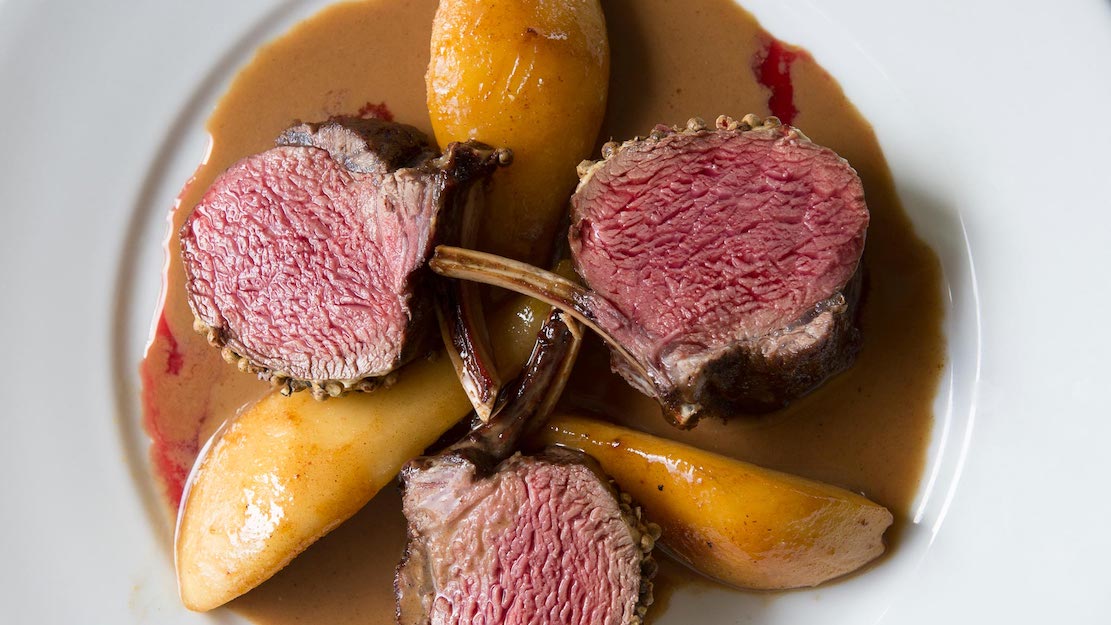 than
does the ubiquitous sirloin, breast of chicken
or veal chop.
than
does the ubiquitous sirloin, breast of chicken
or veal chop.
The thought of rare roast
partridge with dried cranberries and wild rice,
or a hearty haunch of venison au grand
veneur in a reduction of Port wine and red
currants (right), seems far more glorious
in autumn, winter and early spring than it does
in the heat of summer. The season for wild game
begins in the fall and continues into winter,
though the availability of farm-raised game has
made the seasonal appetite for such meats more
traditional than necessary.
For
some, squeamishness about eating game is based
on the erroneous—though understandable—belief
that game is, well, gamey. But
just as fresh fish should never taste fishy, so,
too, game should have a distinct but mild
flavor. Indeed, to my taste too much farm-raised
game is rather bland, especially pheasant, and
the venison widely imported from New Zealand has
 a
consistency chefs love but which I find all too
boring from meal to meal. Those who have never
tasted wild venison can't imagine the luxurious
flavor of the meat, whose flavor is determined
by the diet and age of the animal. Some of the
finest I've ever eaten has been venison provided
to me by a hunter friend who shoots exclusively
with bow and arrow.
a
consistency chefs love but which I find all too
boring from meal to meal. Those who have never
tasted wild venison can't imagine the luxurious
flavor of the meat, whose flavor is determined
by the diet and age of the animal. Some of the
finest I've ever eaten has been venison provided
to me by a hunter friend who shoots exclusively
with bow and arrow.
Game should
be slightly aged, but the fashion in France and
England for game hung for several days, even
weeks, is not only outdated but highly
dangerous, so that even the bible of French
cuisine, Larousse
Gastronomique, now notes that hanging meat
till it's "high" can cause the flesh to be
toxic. (It can also stink.) No
game you buy at a market or eat at a restaurant
is ever going to be hung more than a few days,
but aging under controlled cold temperatures, a
day or two for deer, and perhaps a few days
longer for birds, breaks down the muscle and
fibers of the meat and makes it more tender and
more digestible as well as flavorful. 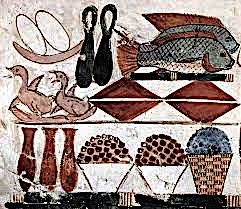
The traditions of game cookery are very
strong in human gastronomy, quite obviously
going back to those prehistoric days when
bringing back meat from the wild was the only
thing that kept tribes alive. Much later the
Egyptians (right), Greeks and Romans
created game preserves for the sport of hunting,
and by the Middle Ages the hunting of game was
largely restricted to the aristocracy, so that
when the French Revolution was in full swing,
the invisible gates to the forests were flung
open to the peasantry, an event that in turn
required people to pay for a license to hunt
game, lest the species be completely wiped out
within decades.
Game, therefore, became once again food
only for those who could afford it, except in
America, where the vast herds of game animals,
including single herds containing up to 12
million buffalo, filled the great plains and the
skies were literally
blackened by game birds. Their slaughter,
sometimes to extinction, brought about the need
for both preservation and the farming of stocks,
so that no one now need fear eating any game
that has not been raised solely for one's
delectation.
literally
blackened by game birds. Their slaughter,
sometimes to extinction, brought about the need
for both preservation and the farming of stocks,
so that no one now need fear eating any game
that has not been raised solely for one's
delectation.
It
goes without saying that the diet of the
mountain men, overwhelmingly fur trappers, who
first ventured into the Colorado territory was
wholly based on what they could shoot, some of
it made into jerky, which was highly nutritious,
full of fat and salt, and easy to carry in one's
saddle bags.
There was scant evidence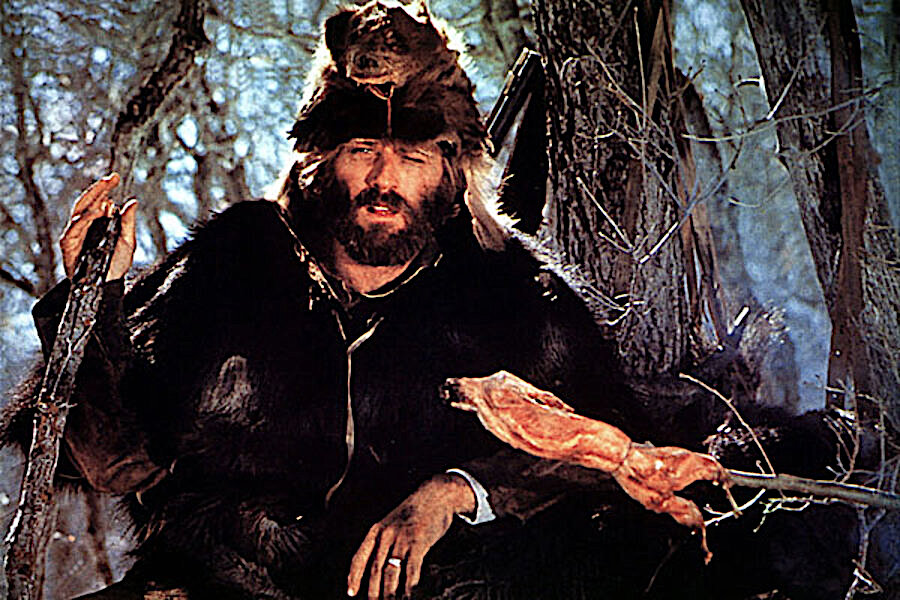 any of it was cooked with much refinement,
causing Horace Greeley to append to his
exhortation to "Go West, young man," with the
comment that what the West really needed was "a
thousand good cooks."
any of it was cooked with much refinement,
causing Horace Greeley to append to his
exhortation to "Go West, young man," with the
comment that what the West really needed was "a
thousand good cooks."
Nevertheless, the
traditions of American game cookery have much to
do with what was available where. In fact,
western game like elk, grizzly bear, even
buffalo tongues were shipped back east as
delicacies, while in Colorado boom towns like
Aspen, the local saloon was probably serving
such items as part of the free lunch.
Robert
Redford in "Jeremiah Johnson" (1972)
Availability today, from butchers
or on-line specialty meat stores, is just
hitting its peak now, and a bird and a bottle or
a haunch of venison is as celebratory as the
season can get.
❖❖❖
FIVE
REASONS WHY YOU SHOULD AVOID
DINING OUT IN NEW YORK DURING THE
HOLIDAYS
By John Mariani
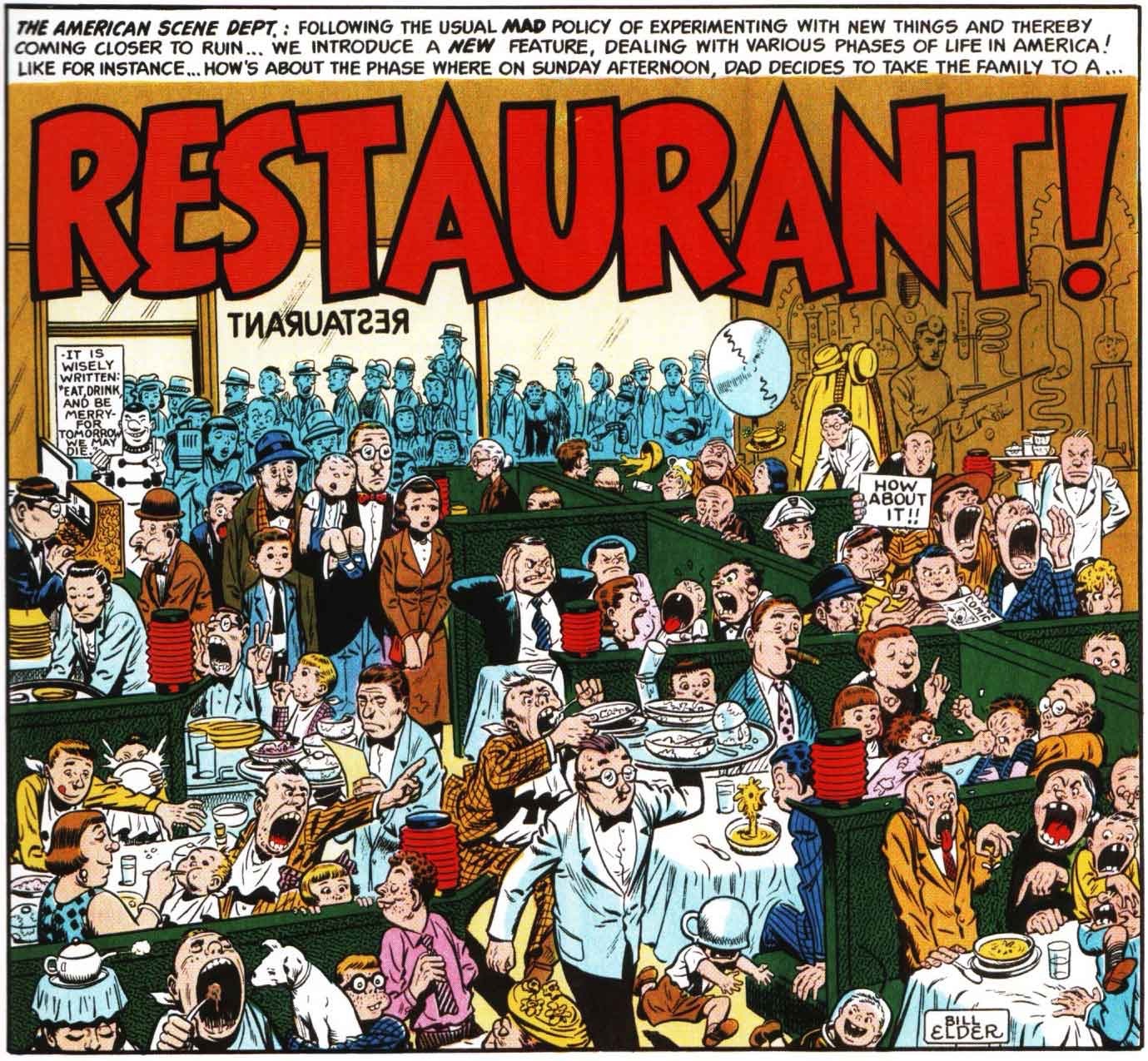
It’s almost a moot point to discuss the
reasons not
to dine out in the Big Apple during the
holidays, because the chances of getting a
reservation at any good restaurant are next to
nil. But there are five good reasons to hold off,
unless you’ve already made your reservations well
in advance.
•
Restaurants are jammed until January 2.
Post-covid, New York’s restaurants sprang back
with astounding resiliency, and the pent-up desire
and demand for reservations quickly reverted to
pre-pandemic levels. After a six-month period of
building back lunch business, everything is in
full swing again. Out-of-town travelers, business
and private parties are taking up all the spaces
in both the most popular restaurants and those on
the second tier, whose local clientele pack them
most nights of the week. Restaurateur David
Ghantanfard, who just opened Valbella at the Park
off 42nd Street, said, “In all my years in the
business, I’ve never seen anything like this. We
never have an empty tab
 •
At any time of the year, especially during
the day, New York is a traffic nightmare,
especially in midtown, where blockages lead to
long delays to get across, up or downtown. The
highways are jammed bumper-to-bumper from 8 to 10
a.m., then 2:30 to 7 p.m., and that has only
gotten worse during the holidays because of
out-of-towners coming in for events, theater and
restaurants. Recently, a trip that usually takes
me 40 minutes to drive to midtown took 90, and the
same amount of time to get home. And, if you do
get into town, parking on the street is extremely
difficult during the holidays—and if you don’t
have familiarity facility reading the city’s byzantine
parking signs you’ll get an $80 ticket or, worse,
be towed, for $325 — and parking lots charge $40
and up for two hours.
•
At any time of the year, especially during
the day, New York is a traffic nightmare,
especially in midtown, where blockages lead to
long delays to get across, up or downtown. The
highways are jammed bumper-to-bumper from 8 to 10
a.m., then 2:30 to 7 p.m., and that has only
gotten worse during the holidays because of
out-of-towners coming in for events, theater and
restaurants. Recently, a trip that usually takes
me 40 minutes to drive to midtown took 90, and the
same amount of time to get home. And, if you do
get into town, parking on the street is extremely
difficult during the holidays—and if you don’t
have familiarity facility reading the city’s byzantine
parking signs you’ll get an $80 ticket or, worse,
be towed, for $325 — and parking lots charge $40
and up for two hours.
 •
Trains, Taxis and Car Services are iffy.
Getting into New York’s Grand Central Terminal and
Pennsylvania Station provides admirably on-time
access and exit, but at peak hours during the
holidays the trains can get very full. Then, you
need to hail a cab, Uber or Lyft (forget buses,
which have to deal with traffic despite bus
lanes), and those become rare around dinner time
and they, too, have to claw their way through
traffic. If you’re lucky enough to get a cab or
car outside Grand Central and have a restaurant
reservation just ten blocks away at 7 o’clock, it
could take 20 minutes or more to get there.
•
Trains, Taxis and Car Services are iffy.
Getting into New York’s Grand Central Terminal and
Pennsylvania Station provides admirably on-time
access and exit, but at peak hours during the
holidays the trains can get very full. Then, you
need to hail a cab, Uber or Lyft (forget buses,
which have to deal with traffic despite bus
lanes), and those become rare around dinner time
and they, too, have to claw their way through
traffic. If you’re lucky enough to get a cab or
car outside Grand Central and have a restaurant
reservation just ten blocks away at 7 o’clock, it
could take 20 minutes or more to get there.
•
Restaurants can’t handle the onslaught of
business. Because there are still serious labor
shortages in the restaurant sector in New York and
elsewhere, there simply aren’t enough cooks or
waitstaff to handle the crush of customers 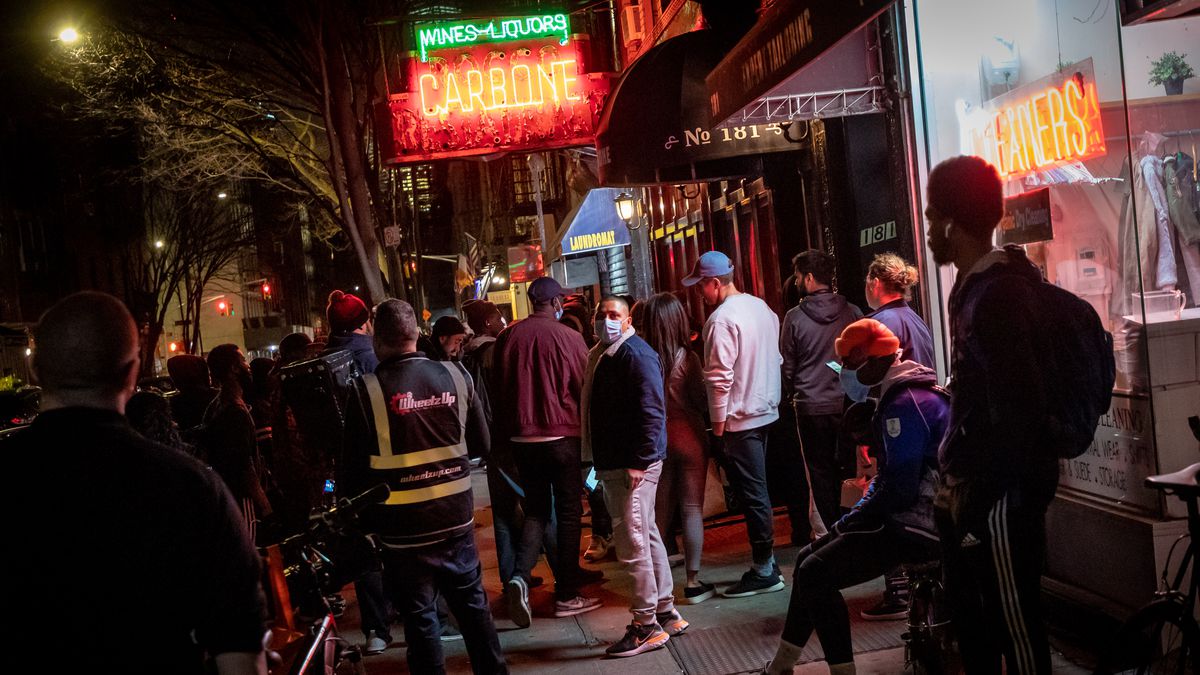 who
arrive by 5 o’clock and keep coming till 9.
Restaurateurs try to stagger reservations but
because of the late arrivals (due to those traffic
jams and parking problems), the schedule often
goes haywire, with people backed up at the door
waiting for their table. Once seated, initial
service can be slow and getting the food out of
the kitchen even slower. Kitchens are used to high
volume and full rooms, but not at the daily and
nightly intensity they get during the holidays.
who
arrive by 5 o’clock and keep coming till 9.
Restaurateurs try to stagger reservations but
because of the late arrivals (due to those traffic
jams and parking problems), the schedule often
goes haywire, with people backed up at the door
waiting for their table. Once seated, initial
service can be slow and getting the food out of
the kitchen even slower. Kitchens are used to high
volume and full rooms, but not at the daily and
nightly intensity they get during the holidays.
•
Everything gets much better in January.
After New Year’s, New Yorkers still dine out, but
cut way back, and January is a notoriously slow
month for restaurants. That is when you will more
easily find tables at even the most popular
restaurants, especially at lunch time, and the
pacing of your meal much more relaxed. Plus, the
restaurateurs are very, very happy to see you
during that slow month.
❖❖❖
ANOTHER VERMEER


Katie
asked a few more questions but could see that
Donaldson had a great deal on his mind, for
while the overall effect of selling the Vermeer
was good for Crofthouse’s reputation, the
carping about the lower sale price might mean
that the next time the Chinese would sell
through Sotheby’s or Christie’s.
“What time is it in New York?” Katie asked
David.
“You’re asking me? I still haven’t gotten
it right.”
Katie quickly did some figuring in her
head. “I think it’s eight in the morning. I’d
better call my editor and let him know what
happened. The American papers will run the story
tomorrow, and it’s like, what? one p.m. in London?
They might get it in a late edition or on the TV
news.”
“But Dobell won’t be running anything
soon,” said David.
“True, but he’ll want to know ASAP.”
“What about Coleman?”
“Screw Coleman. You going to call Kiley and
Bao?”
“Oh yeah,” David said. “No rush. I’ll call
them right after you let me take you out for
dinner. Okay?”
“Mr. Greco, you’ve got yourself a date,”
said Katie. “You have that list of restaurants
Mrs. Curren gave us?”
“I already asked her to make a reservation
at a good one.
I’ll even pick up the check.”
“Now, don’t start doing that, David! Never
waste a legitimate opportunity to take full
advantage of an expense account when you can. So
where are you taking me?”
“A place called Man Wah in the Mandarin
Oriental Hotel. It’s less than a mile from here.”
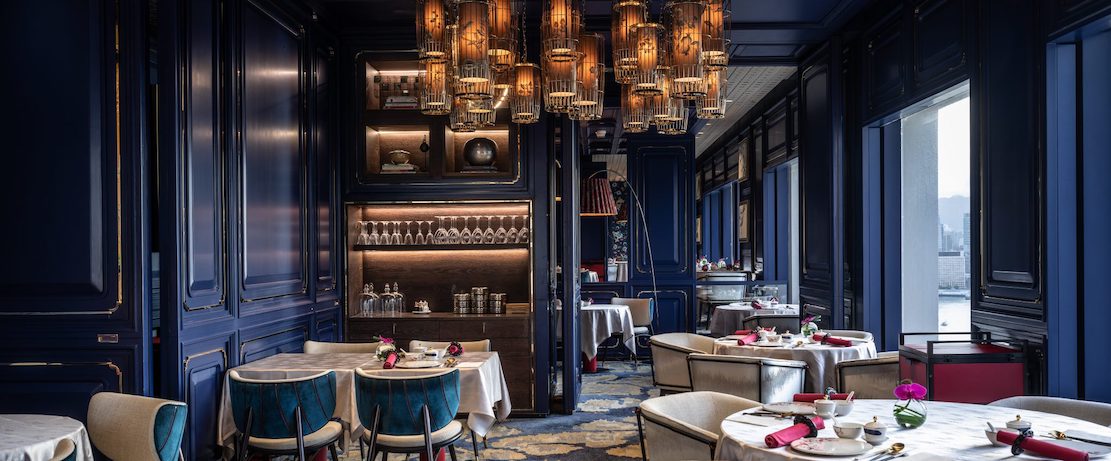 “Really? Well, it’s such a beautiful night,
shall we walk over?”
“Really? Well, it’s such a beautiful night,
shall we walk over?”
David thought that was the best thing Katie
could have said.
“At your service,” he said, offering her
his arm.
The night was indeed very beautiful with a
crescent moon over Hong Kong Harbor, and Katie and
David took their time walking to the posh Mandarin
Oriental hotel on Connaught Road, where the
restaurant Man Wah was perched on the 25th floor,
offering a stunning view of the sparkling city at
night.
The room itself was low lighted, with
paintings on silk, lacquered furniture, and
first-rate Chinese ceramics throughout. By then it
was close to ten o’clock, but the two Americans
were very cordially welcomed as friends of the
Currens and promised a very special evening.
 The
cuisine was exquisite, far more refined than
anything they’d had over the past week in Hong
Kong, and the table settings and stemware seemed
to be of museum quality. Katie
and David left the menu up to the captain and were
rewarded with the chef’s signature dishes, which
included braised bird’s nest soup with dried
seafood, a velvety steamed fillet of spotted
grouper with aromatic ginger, and roast suckling
pig with marinated abalone, jellyfish and shrimp
in a delicate sesame sauce.
The
cuisine was exquisite, far more refined than
anything they’d had over the past week in Hong
Kong, and the table settings and stemware seemed
to be of museum quality. Katie
and David left the menu up to the captain and were
rewarded with the chef’s signature dishes, which
included braised bird’s nest soup with dried
seafood, a velvety steamed fillet of spotted
grouper with aromatic ginger, and roast suckling
pig with marinated abalone, jellyfish and shrimp
in a delicate sesame sauce.
“I’ve never had Chinese food this
wonderful,” said Katie.
“I’ve never had Chinese food anything like
this,” said David, enjoying new tastes like
abalone, sea conch and seaweed. “But I really like
it.”
They spent a good deal of time looking out
the vast windows at the city that had become their
sanctuary.
“We were so lucky,” said Katie.
David just nodded, feeling that being
rescued was only part of the joy he felt sitting
across from Katie.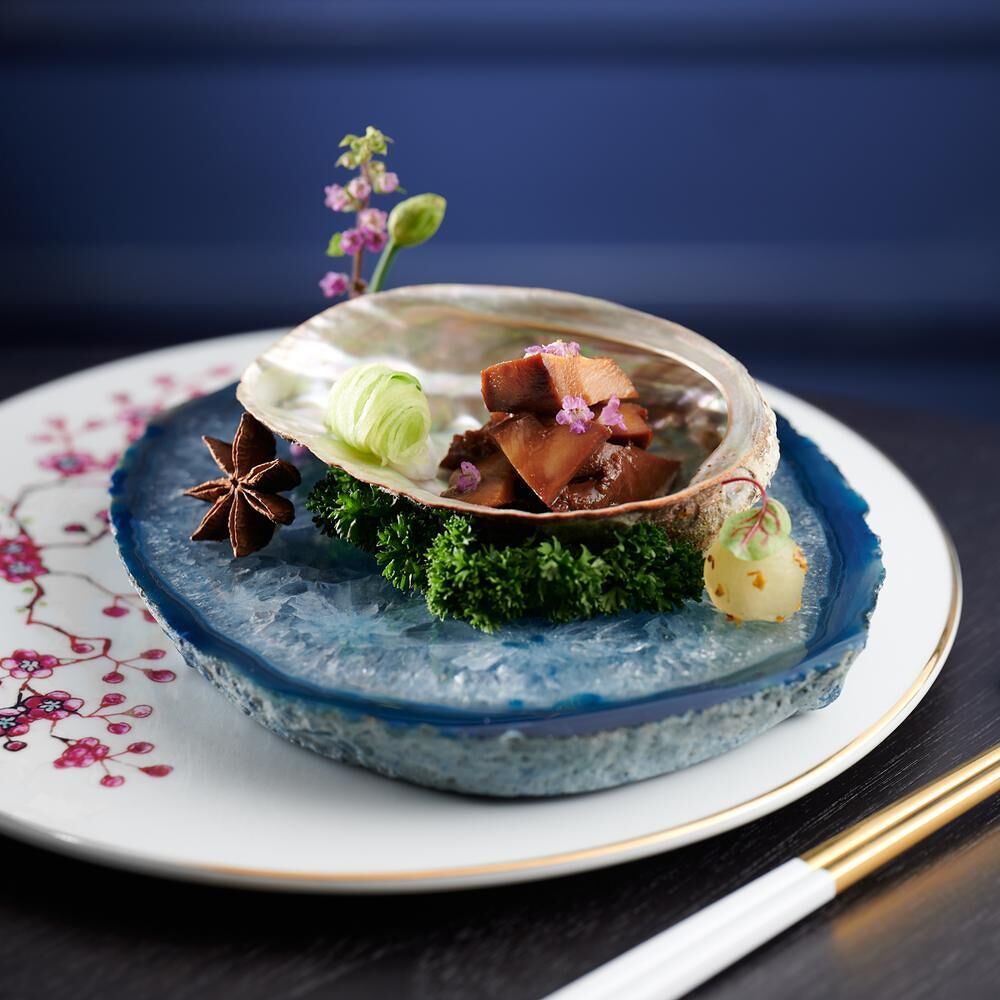
“Here’s to Jan Vermeer, who got us here!”
she said, raising a glass of French wine.
“And to the Hong Kong Harbor Police who
saved our asses.”
He wished he hadn’t said that. It kind of
broke the spell of the moment, so he just kept
quiet and looked at Katie and past her at the
yellow crescent moon bobbing in the choppy waters
of the great harbor.
When Katie and David arrived back at the
Consulate and retired to their rooms, both ditched
plans to make any calls back to the U.S. The
stress and excitement of the past ten days, plus
the food and wine, took its toll by lulling them
into a deep sleep and a late morning rising.
It would be their last day in Hong Kong, at
least for the present, and their flight left in
the late afternoon, so a good breakfast was
followed by fond farewells all around. Mrs. Curren
presented them both with wrapped gifts that turned
out to be small carry-on suitcases.
“I know you don’t have much to pack, but
they’re better than a paper bag,” she said.
Indeed, except for what Katie and David had
acquired in Hong Kong, they had nothing left to
pack. “And remember,” said Mrs. Curren, “if you
have to come back here for the trial, I insist you
stay with us.”
The flight was 15 hours to New York, and
Katie and David slept much of the way. After
going through customs at JFK, David said, “I’m
planning on crashing for the rest of the weekend
before calling anyone. What about you?”
“I’ll call my editor, but I want to find
out what, if anything, has happened with Coleman
before speaking to him again.”
Katie was next in line for a taxi—David was
taking a shuttle van to his home up the Hudson
River—and she said, “Well, I guess I’ll see you
soon enough.”
“I hope so. I hope it’s before we have to
go back to Hong Kong.”
“I hope we don’t have
to
go back to Hong Kong. I can’t say I have real fond
memories of the place, even though everything
worked out well.”
“And you’ve got your story.”
“And I’ve got my story.”
The cabbie was getting out to open the
trunk, even though Katie had only the small bag.
“Okay, then,” said David. “Let’s speak soon
and wrap this whole case up.”
“Absolutely. And, David, once again, thanks
for everything you did, right from the start. We
make a damn good team, don’t we?”
“My pleasure,” he said, “but make sure
Dobell sends the check.”
“Send me your receipts.”
Katie hugged David,
kissed him on both cheeks, waved from inside the
cab and was on her way back to the Bronx. He waved
at her till the cab was out of sight.
© John Mariani, 2016
❖❖❖
WINES FOR HANUKAH
By Geoff Kalish
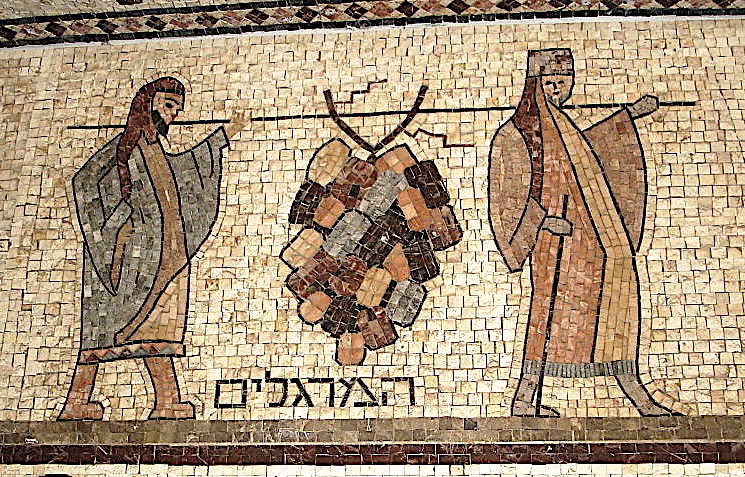
Like Thanksgiving, because of the range
of flavors usually served together, matching wine
with the typical fare served during the Hanukah
holiday is often not a simple chore. On the one
hand there’s the almost universal requirement for
latkas
(fried potato pancakes) served with apple sauce
and/or blintzes
(thin rolled pancakes filled with cheese or fruit,
then fried or baked and served with sour cream)
and/or fried jelly doughnuts. But there’s also
items like potato and/or noodle kugel
(casserole), braised brisket of beef, and/or cold
poached salmon or roast chicken or duck or turkey,
depending on the choice of the host.
While there’s no written or unwritten
requirement for the wine to be kosher (like there is
on Passover), many prefer to serve kosher wine with
the fare. And, unlike kosher wine of years ago,
there’s much more than sweet concord-grape versions
available. So, for those so inclined, I offer the
following eight widely available, sensibly priced
dry kosher wines from locales around the world,
selected from a number of tastings this past year,
that seem to mate well with the range of fare
usually offered on one or all of the eight nights of
Hanukah.
WHITES

2021
Goose
Bay Sauvignon Blanc ($22)—One of
the first kosher wines produced in New Zealand, this
white was made from organic grapes grown in
vineyards noted for cool daytime temperatures on the
country’s South Island. It shows a bouquet and dry
taste of grapefruit and melons with a crisp finish
and makes an excellent mate for potato pancakes as
well as salmon, chicken and duck.
2020
Evan’s
Collection Pacifica Rattlesnake Hill Viognier
($22)—Hailing from Evan’s Vineyard on Underwood
Mountain in Washington State, this white has a
bouquet of fresh honeysuckle and a fruity taste of
ripe apples with touches of kiwi and fresh-cut herbs
in its finish. It marries harmoniously with blintzes
as well as chicken, duck and salmon.
REDS
2020
Odem
Forest Red Blend ($24)—Run by the Alfasi
family, this wine is from Israel’s most northern
winery in Galilee (noted for long daylight hours and
modest temperatures) and was made from a blend of
Cabernet Sauvignon (60%), Nebbiolo (20%) and
Syrah (20%). It features a bouquet and taste of wild
berries and cassis with a hint of eucalyptus in its
finish, perfect to match with potato pancakes as
well as brisket of beef.
2015
Hafner
Kashmir ($23)—This wine was
produced from certified organic grapes (60% Cabernet
Sauvignon, 30% Blaufrankish and 10 % Rahay), grown
in the Burgenland area, near Lake Neusiedl on
Austria’s eastern border. Following fermentation,
the wine was aged in French oak casks for 30 months.
It’s a full-bodied wine with a concentrated flavor
of ripe plums and cassis and hints of herbs in its
finish, mating well with the full range of fare
usually offered for the holiday.
2020
Borgo
Reale Pinot Noir ($17)—Made from
Pinot Noir grapes grown in volcanic soil in Apulia,
in Italy’s south-eastern “heel” region, it shows a
bouquet and rather delicate taste of ripe plums and
cranberries and makes a particularly good match for
potato pancakes, kugel and
poached salmon.
2019
Domaine
Lafond Cuvée de
Centenaire Côtes-du-Rhône
($16)—This easy-drinking wine from a winery founded
in 1780 in France’s rather warm southern Rhone area
is a blend of Grenache (70%) and Syrah (30%). It
shows a floral bouquet and fruit-forward taste of
ripe cherries, raspberries, and strawberries with a
long-lasting smooth finish, perfect to harmonize
with the full range of Hanukah fare.
.800x800.jpeg)
2020
Terra
Vega Pinot Noir ($10)—This bargain
bottle from a winery in Chile’s Central Valley, near
Santiago, that has been producing wine since the
16th century shows a bouquet and taste of
strawberries and cherries with notes of vanilla. It
makes great accompaniment for blintzes
and doughnuts, as well as kugels and
even salmon.
2020
Château
Genlaire Bordeaux Supérieur
($22)—This robust wine was produced by a family-owned
(6th generation) facility, located in France’s
Entre-de-Mers area (on land between the Garonne and
Dordogne Rivers of Bordeaux). Made from a blend of
Cabernet Sauvignon, Merlot and Cabernet Franc, it
has a bouquet and taste of black currants and plums
with a finish showing a bit of tannin that mates
well with brisket of beef or duck.
❖❖❖
ALTERNATELY
REFERRED TO AS "BLAH GRAS."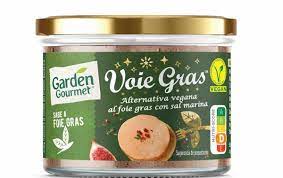
Nestlé and Coop are now producing a vegan
substitute for foie gras made from shea butter,
sunflower, miso paste, truffle oil and
coriander, called "Voie Gras."
.
❖❖❖
Any of John Mariani's books below may be ordered from amazon.com.
 The Hound in Heaven
(21st Century Lion Books) is a novella, and
for anyone who loves dogs, Christmas, romance,
inspiration, even the supernatural, I hope you'll find
this to be a treasured favorite. The story
concerns how, after a New England teacher, his wife and
their two daughters adopt a stray puppy found in their
barn in northern Maine, their lives seem full of promise.
But when tragedy strikes, their wonderful dog Lazarus and
the spirit of Christmas are the only things that may bring
his master back from the edge of despair.
The Hound in Heaven
(21st Century Lion Books) is a novella, and
for anyone who loves dogs, Christmas, romance,
inspiration, even the supernatural, I hope you'll find
this to be a treasured favorite. The story
concerns how, after a New England teacher, his wife and
their two daughters adopt a stray puppy found in their
barn in northern Maine, their lives seem full of promise.
But when tragedy strikes, their wonderful dog Lazarus and
the spirit of Christmas are the only things that may bring
his master back from the edge of despair. WATCH THE VIDEO!
“What a huge surprise turn this story took! I was completely stunned! I truly enjoyed this book and its message.” – Actress Ali MacGraw
“He had me at Page One. The amount of heart, human insight, soul searching, and deft literary strength that John Mariani pours into this airtight novella is vertigo-inducing. Perhaps ‘wow’ would be the best comment.” – James Dalessandro, author of Bohemian Heart and 1906.
“John Mariani’s Hound in Heaven starts with a well-painted portrayal of an American family, along with the requisite dog. A surprise event flips the action of the novel and captures us for a voyage leading to a hopeful and heart-warming message. A page turning, one sitting read, it’s the perfect antidote for the winter and promotion of holiday celebration.” – Ann Pearlman, author of The Christmas Cookie Club and A Gift for my Sister.
“John Mariani’s concise, achingly beautiful novella pulls a literary rabbit out of a hat – a mash-up of the cosmic and the intimate, the tragic and the heart-warming – a Christmas tale for all ages, and all faiths. Read it to your children, read it to yourself… but read it. Early and often. Highly recommended.” – Jay Bonansinga, New York Times bestselling author of Pinkerton’s War, The Sinking of The Eastland, and The Walking Dead: The Road To Woodbury.
“Amazing things happen when you open your heart to an animal. The Hound in Heaven delivers a powerful story of healing that is forged in the spiritual relationship between a man and his best friend. The book brings a message of hope that can enrich our images of family, love, and loss.” – Dr. Barbara Royal, author of The Royal Treatment.
 |
The Encyclopedia of American Food and Drink by John F. Mariani (Bloomsbury USA, $35) Modesty forbids me to praise my own new book, but let me proudly say that it is an extensive revision of the 4th edition that appeared more than a decade ago, before locavores, molecular cuisine, modernist cuisine, the Food Network and so much more, now included. Word origins have been completely updated, as have per capita consumption and production stats. Most important, for the first time since publication in the 1980s, the book includes more than 100 biographies of Americans who have changed the way we cook, eat and drink -- from Fannie Farmer and Julia Child to Robert Mondavi and Thomas Keller. "This book is amazing! It has entries for everything from `abalone' to `zwieback,' plus more than 500 recipes for classic American dishes and drinks."--Devra First, The Boston Globe. "Much needed in any kitchen library."--Bon Appetit. |
"Eating Italian will never be the same after reading John Mariani's entertaining and savory gastronomical history of the cuisine of Italy and how it won over appetites worldwide. . . . This book is such a tasteful narrative that it will literally make you hungry for Italian food and arouse your appetite for gastronomical history."--Don Oldenburg, USA Today. "Italian
restaurants--some good, some glitzy--far
outnumber their French rivals. Many of
these establishments are zestfully described
in How Italian Food Conquered the World, an
entertaining and fact-filled chronicle by
food-and-wine correspondent John F.
Mariani."--Aram Bakshian Jr., Wall Street
Journal.
"Equal parts
history, sociology, gastronomy, and just
plain fun, How Italian Food Conquered the
World tells the captivating and delicious
story of the (let's face it) everybody's
favorite cuisine with clarity, verve and
more than one surprise."--Colman Andrews,
editorial director of The Daily
Meal.com. "A fantastic and fascinating
read, covering everything from the influence
of Venice's spice trade to the impact of
Italian immigrants in America and the
evolution of alta cucina. This book will
serve as a terrific resource to anyone
interested in the real story of Italian
food."--Mary Ann Esposito, host of PBS-TV's
Ciao
Italia. "John Mariani has written the
definitive history of how Italians won their
way into our hearts, minds, and
stomachs. It's a story of pleasure over
pomp and taste over technique."--Danny Meyer,
owner of NYC restaurants Union Square
Cafe, The Modern, and Maialino.
|
 |
 |
 |
 |
 |
 |
 Everett Potter's Travel Report:
Everett Potter's Travel Report: 
 Eating Las
Vegas
Eating Las
Vegas
MARIANI'S VIRTUAL GOURMET
NEWSLETTER is published weekly. Publisher: John Mariani. Editor: Walter Bagley. Contributing Writers: Christopher
Mariani, Misha Mariani, John A. Curtas, Gerry Dawes, Geoff Kalish.
Contributing
Photographer: Galina Dargery. Technical
Advisor: Gerry
McLoughlin.
If you wish to subscribe to this
newsletter, please click here: http://www.johnmariani.com/subscribe/index.html
© copyright John Mariani 2022
